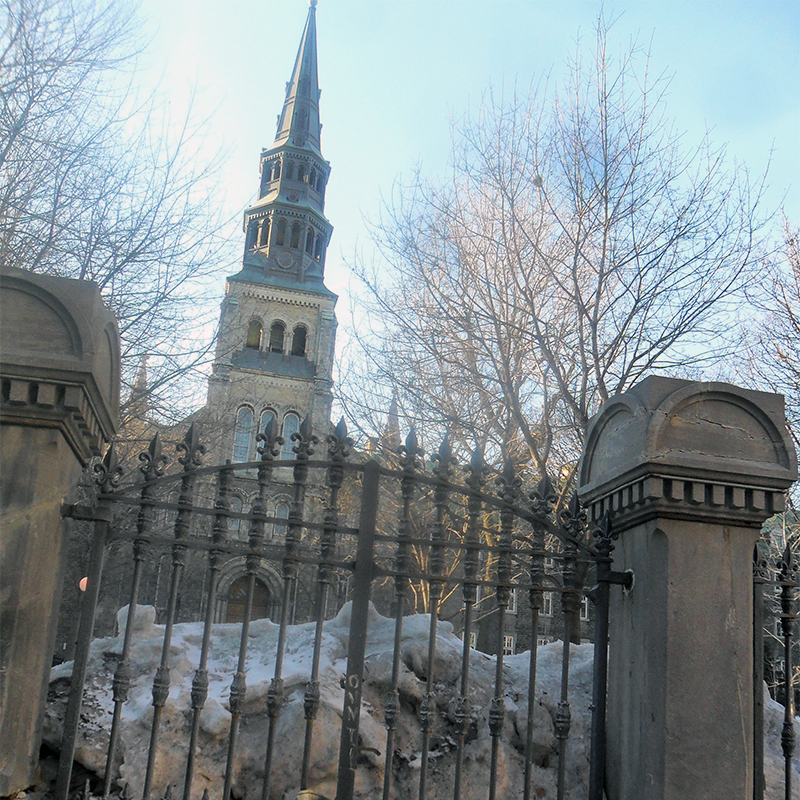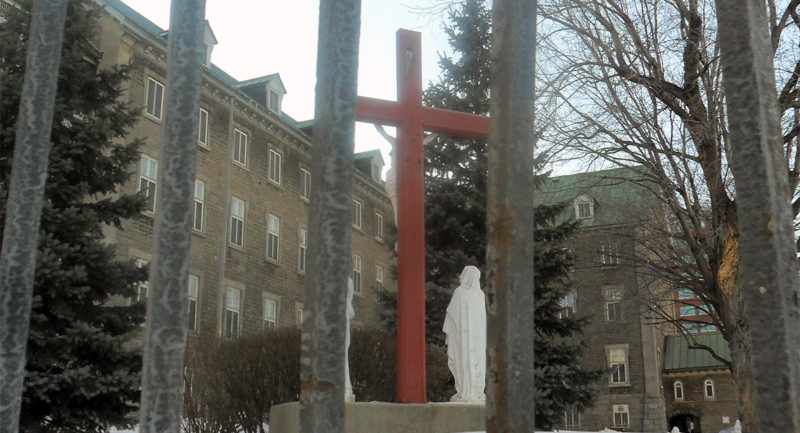There are some 232 dead nuns interred in a crypt beneath the Grey Nuns Motherhouse at the corner of Guy Street and René-Lévesque Boulevard West, in the Montreal borough of Ville-Marie.
It’s a macabre thought, but even more bizarre is that it’s a residence for students at Concordia University’s Sir George Williams campus.
Though the renovation of the property started in 2007, the building itself, designated for the Grey Nuns under the direction of Canada’s first native-born saint, Marie d’Youville, was built in 1871.
Before its absorption into the campus life, it served as a hospital and orphanage, and with the new role, it was suggested the bodies be moved to the Île St. Bernard. However that was quickly kyboshed by Quebec’s Ministry of Health, due to the contagious illnesses the nuns, and others buried within the crypt had.
Gruesome as the crypt — called the Chapelle de L’Invention-de-la-Sainte-Croix — may seem, the location is a frequent stop for Haunted Montreal Ghost Tours. Headed by Donovan King, the company takes ghost fanatics around the city on three separate tours. The Grey Nuns residence, given a National Historic Site of Canada designation in 2011, is part of the Downtown Montreal Tour.
King is a graduate from Concordia, and during his time there, the Grey Nuns Motherhouse was a mysterious entity all on its own.
During the 1980s, the Grey Nuns no longer brought on new recruits, so as they passed away or moved to long-term healthcare facilities in Rosemount.
“The nuns already had space for a thousand nuns and these were sleeping quarters,” King said, in a late summer phone call. “They didn’t need renovations.”
However, the hospital and orphanage area of the building was a different story. King shared the grisly tale of a fire that broke out on Valentine’s Day 1918 in the orphanage, which was located above the hospital.
Soldiers, who were recovering in the hospital, along with firemen, attempted to rescue the infants, but according to the Newfoundland Western Star, published at the time, they were beaten back.
In total, there were 53 confirmed deaths.
“There is speculation that more had died and babies had been just cremated by the fire,” King said.
Throughout his investigations, some residents of that building have experienced bizarre visions about the fire. King said he had heard one young lady being unable to sleep at night because of the visceral dreams she was having.
“This girl, who is sensitive, was having these visions of disfigured children who were burned, and they wouldn’t go away,” he said. “She tried everything. Chamomile tea, sleeping pills, yoga, whatever. They wouldn’t go away. It didn’t work.
“They didn’t go away until she moved out of the building and into her boyfriend’s apartment.”
The ghost stories get younger.
According to some, the Observation nursery, located in the Grey Nuns Annex Building, has been host to some spooky tales involving the daycare children.
Initially brushed aside as imaginary friends, the workers at the daycare began to notice more than one child witnessing the apparition of a young boy.
“I don’t want people getting freaked out about a daycare,” he said. “They talk about many children meeting this ghostly boy. The daycare workers thought it was just an imaginary friend until they realized how many of them were meeting this boy.”
Now, the Grey Nuns have a deep history in Montreal dating back to 1737 and the days of New France.
Marguerite Dufrost de Lajemmerais and three other ladies who were providing charitable acts to the citizens of Montreal began helping women. The first shelter build was the Le Verrier House on Notre Dame Street in Montreal.
Eventually, through her commitment to the colony, Marguerite Lajemmerais, the widow of François Youville, was appointed the provisional administrator of the bankrupt general hospital, founded by François Charon. They took care of men, women, the poor, disabled, mentally challenged and orphaned.
Marie d’Youville died in 1771, a hundred years before the Grey Nuns took up roost on Guy Street, but the nuns continued her work, and eventually expanded to where the Motherhouse is located.
Which calls to question another landmark with a macabre past.

The spire from the front of the Grey Nuns Residence in Montreal.
There is a brown cross located where the Grey Nuns Motherhouse is. That’s the mark of a murderer who had previously been buried at the crossroads.
In 1752, Jean Baptiste Goyer lived in a farmhouse on the grounds. His neighbours were Jean Favre and Mary-Anne Bastien, who were quite wealthy.
The story goes, King said, that Goyer said he was taking a trip to Quebec City in a canoe, and while he was away Favre and Bastien were murdered and robbed.
Goyer returned, expressed horror at their deaths, and then proceeded to spend unscrupulously at the local tavern.
Of course, those actions alone made him the primary suspect in the case.
In order to get him to confess, the torture method of choice was the Spanish Boot – nailing the accused legs to planks of wood.
“Back in the days of New France, they used a lot of torture to extract confessions. He broke under the torture. He confessed to the murder. He was only trying to take their money,” King said.
Goyer was then executed at the Place de Marché and then they dragged by horse to the site where the Motherhouse now is.
“They buried him at a crossroads (and) they planted a cross there,” King shared. “This was meant as a warning to people not to commit this particular crime.”
To this day, Goyer is there — the blood-red cross (now painted brown) — a painful reminder of his wrongdoing.
“It’s called the Murderer’s Cross. This guy is still buried there, under the bustling or the sidewalk.”
The Greys Nun residence is a wonderful passage into the way things were in New France during the 18th century.
Editor’s Note: If anyone has further information or anecdotes about Grey Nuns, please contact us via [email protected]
Photos courtesy Donovan King

